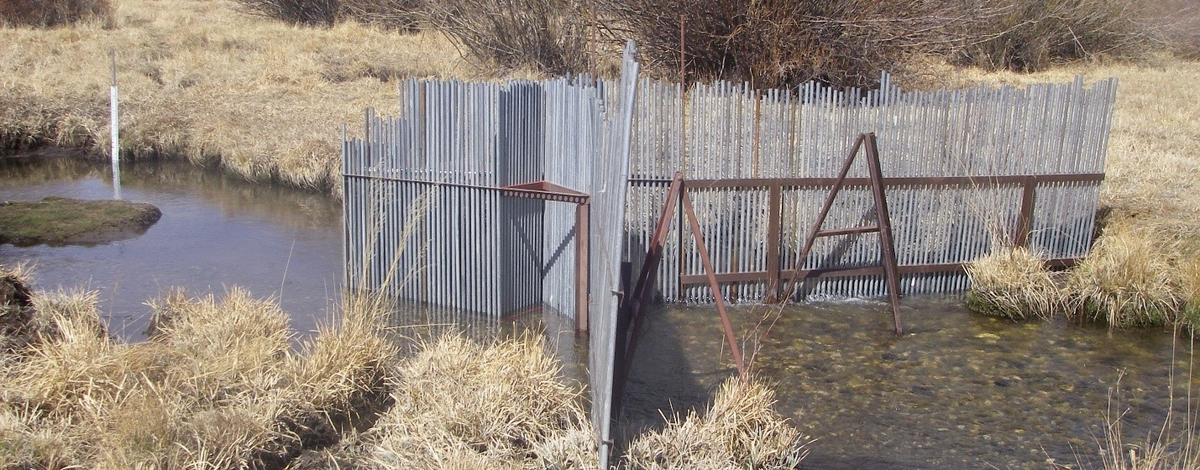During the spring or fall you may have seen Idaho Fish and Game staff building metal picket fences across a nearby stream. These fences are actually an important sampling tool called a picket weir that Fish and Game biologists use to capture and sample migrating salmon and trout.
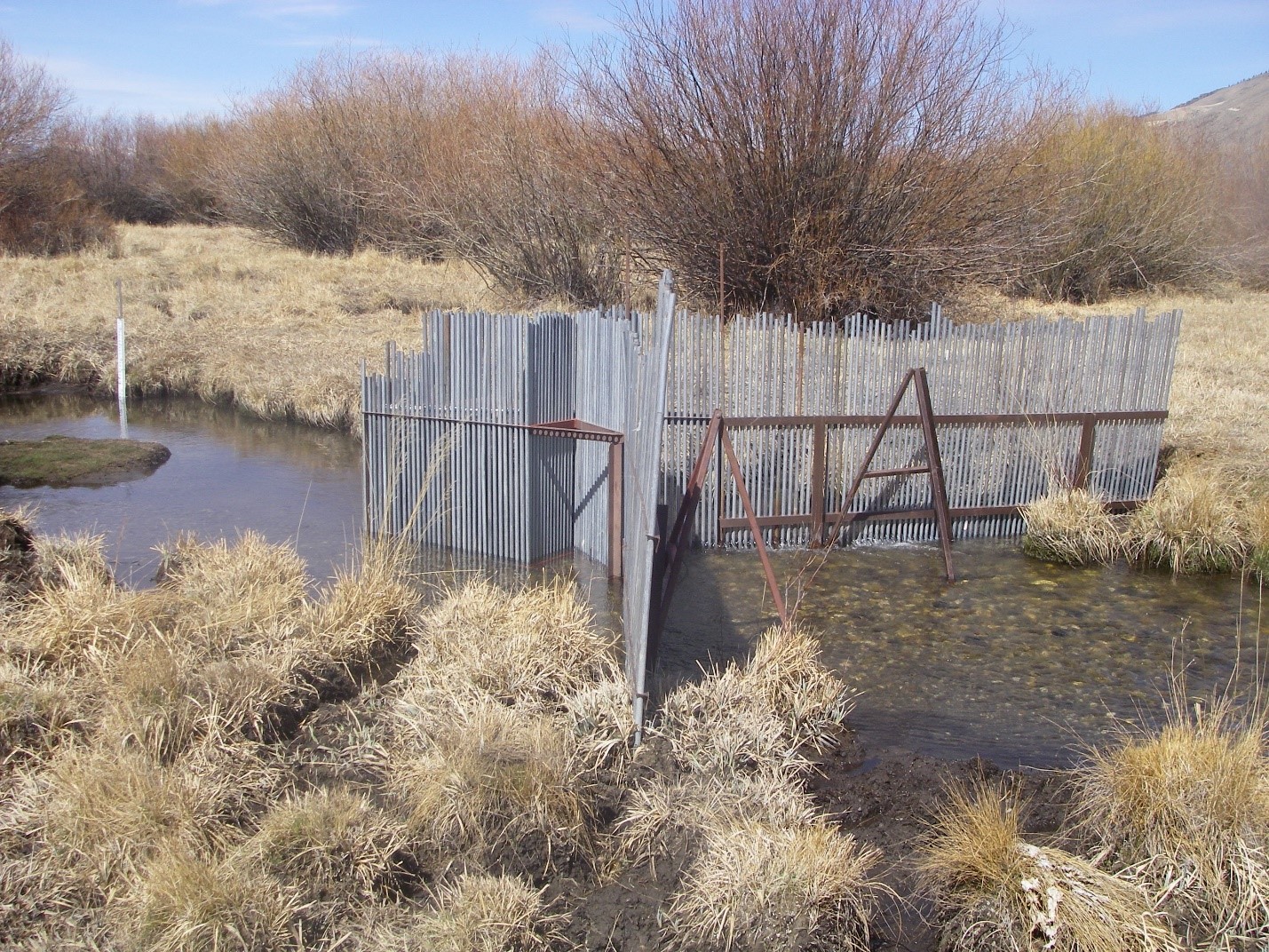
Picket weirs were used for centuries to capture fish for subsistence, commercial, and scientific purposes. Native Americans used picket weirs in streams and small rivers to capture migrating salmon for food. Similar structures have also been used to capture returning salmon for commercial harvest and brood stock at hatcheries. In Idaho, biologists have been using picket weirs for decades to study wild salmon, steelhead, and trout as they migrate to spawn.

A picket weir is made of two panels of pickets that serve to “fence” off the stream and funnel fish towards a trap box. Weirs can be operated to capture fish migrating upstream, downstream, or in both directions, depending on the study and how the weir and trap box is placed. In the example below, fish swim downstream to the panels, then swim along them until they find the opening to the trap box. Fish that swim into the trap are unable to swim back out because of “fingers” placed on the opening to the trap. When biologists arrive, they close off the opening to the box with more pickets, then net fish out of the box to take data.
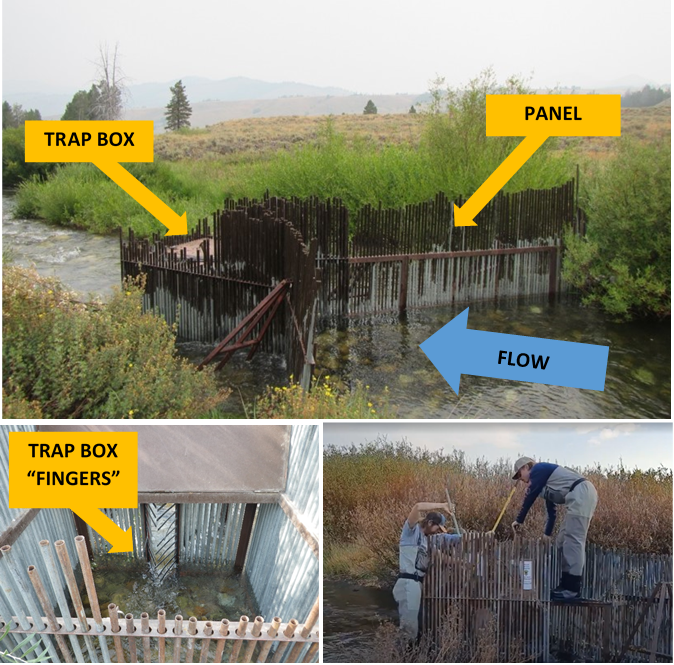
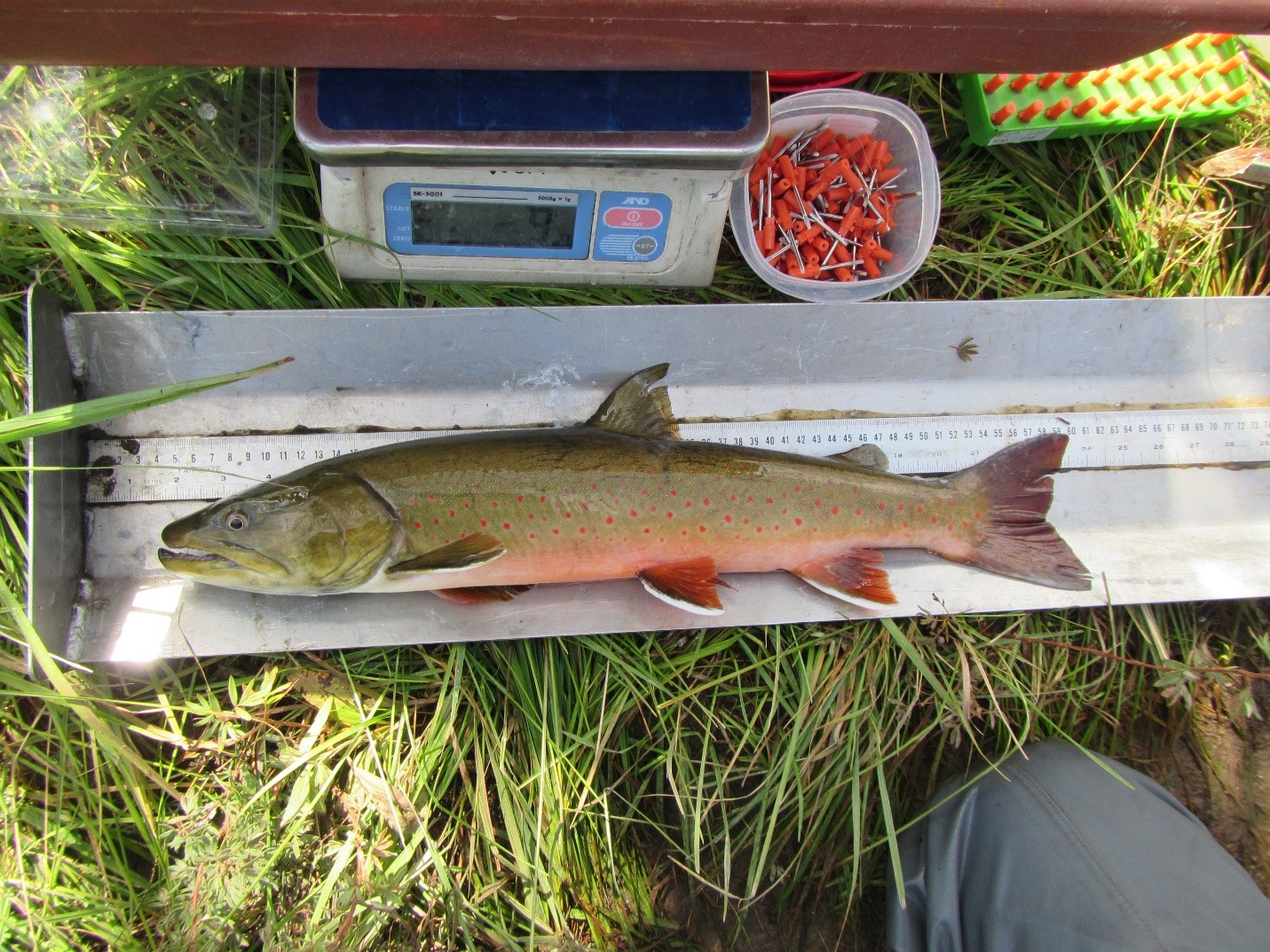
In the Upper Salmon River, Fish and Game operates four weirs each fall to capture and tag bull trout as they migrate to spawn. Once bull trout are captured at the weir, staff weigh, measure, and tag the fish with a Passive Integrated Transponder (PIT) tag.
These tags each have a unique number that can identify the fish when they are captured in the future, or when they swim over permanent antennas throughout the river. Fish biologists started using PIT tags in the 1980s to track salmon and steelhead in the Columbia River. Now PIT tags are used widely by fisheries and wildlife biologists to track animals on land and in water.
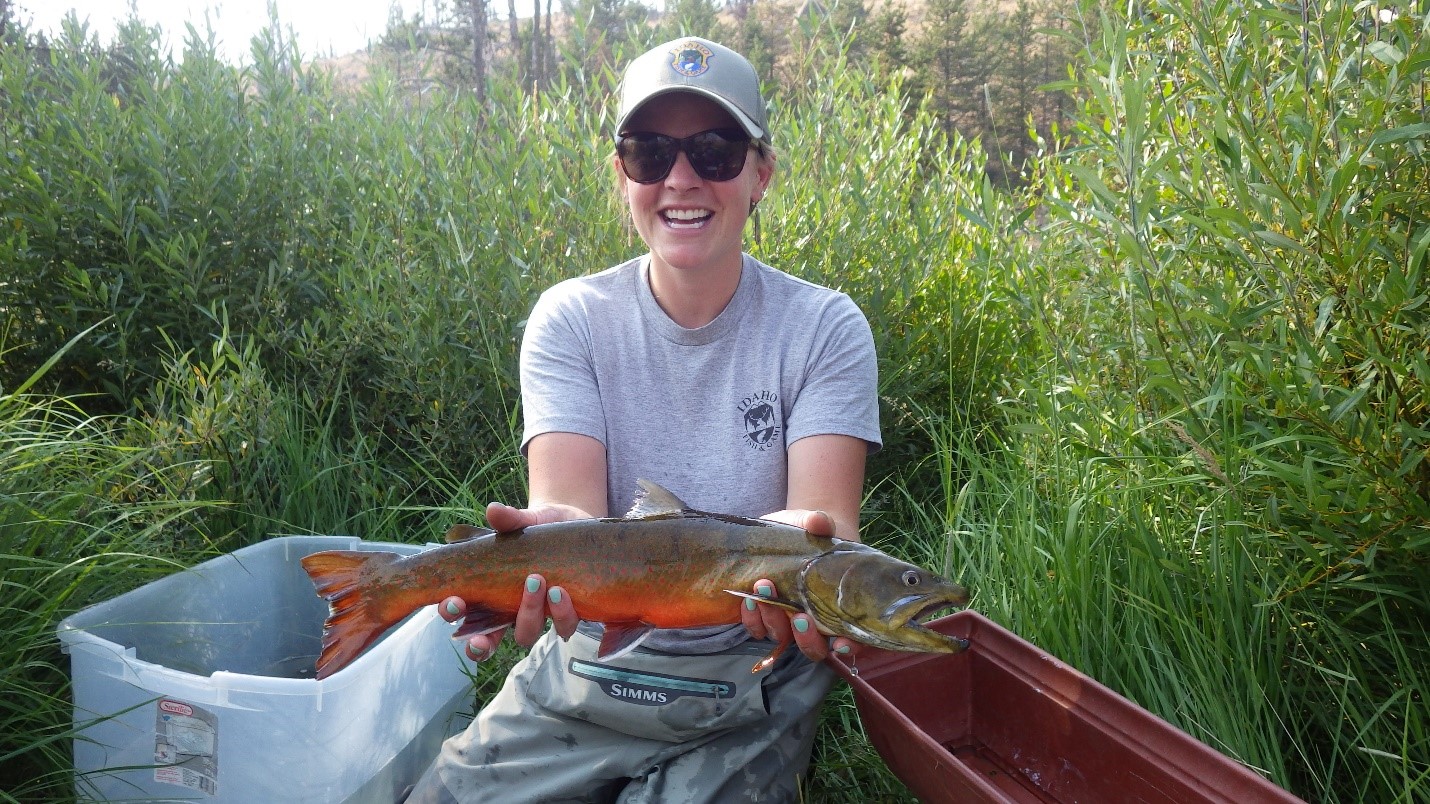
Bull trout can make large spawning migrations, sometimes over 150 miles! In the Upper Salmon River, many fish may spend most of the year living in the river or one of the large lakes like Redfish Lake. During high water they move into a small streams where they wait to spawn in the fall.
After spawning, trout swim downstream and into the weirs. Operating weirs on spawning streams helps Fish and Game staff monitor bull trout spawning populations over time. Biologists find out when fish spawn, how many are spawning, and whether some spawn many years in a row. They also allow biologists to track whether habitat restoration and stream reconnection projects improve resident trout populations. Ultimately, this information helps Idaho Fish and Game manage bull trout and their habitat across the state.

